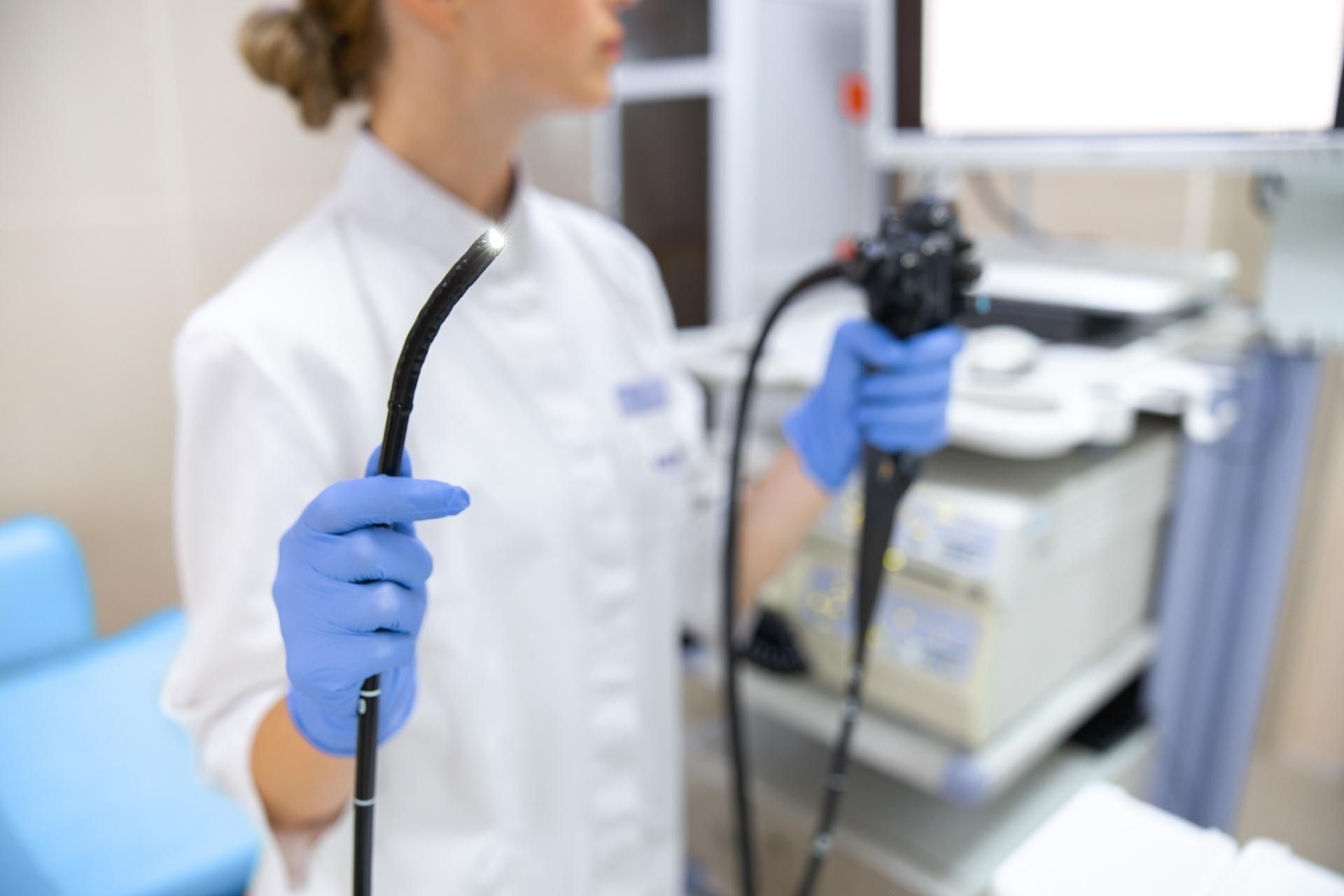
We perform several types of endoscopy procedures at our hospital. These allow our physicians to view the inside of a patient’s body without invasive surgery. Endoscopy serves many purposes and is an essential part of any physician’s toolkit. Depending on their patient’s symptoms, a physician may recommend one to aid in diagnoses or provide targeted treatment to the digestive system. Here’s a brief overview of the types of endoscopy procedures we provide.
What Is an Endoscopy?
An endoscopy is a medical procedure which requires the use of a specialized tool called an endoscope. Most endoscopes are thin, flexible tubes that feature a light and a camera on the end. Doctors carefully insert them into various parts of the body to get a closer look at a patient’s internal tissues.
Endoscopies are relatively quick and painless procedures that rarely produce any major complications. Doctors often perform either an upper or lower endoscopy to help them make a precise diagnosis. Upper endoscopies examine the upper part of the gastrointestinal (GI) tract for ulcers, tumors, bleeding, and inflammation, while lower endoscopies assess the lining of the large intestine for similar conditions.
Colonoscopy
A colonoscopy is one of the most common types of endoscopy procedures. Physicians perform colonoscopies to thoroughly examine the entire large intestine (colon), plus the rectum and part of the small intestine. Sedation is often employed during these procedures to reduce patient discomfort.
Colonoscopies involve an endoscope connected to a video monitor. Doctors maneuver the endoscope throughout the colon while looking for polyps, bleeding, lesions, cancer, fissures, fistulas, foreign bodies, and Crohn’s Disease. They often insert other tools through the endoscope to obtain tissue samples or treat specific symptoms.
Gastroscopy
Gastroscopy, also known as esophagogastroduodenoscopy (ESG), is a common form of upper endoscopy. Physicians employ these procedures to assess the condition of a patient’s esophagus, stomach, and upper small intestine (duodenum). They insert a gastroscope into the mouth to look for the cause of various symptoms including bleeding, heartburn, stomach pain, and labored swallowing. Gastroscopies generally involve the use of a local anesthetic and sometimes a sedative, too.
Feeding Tube Insertion
An endoscopy can also be performed to aid with the insertion of a feeding tube. Physicians use a lighted endoscope to guide them as they carefully insert a feeding tube directly into the patient’s stomach. This allows fluid, nutrition, or medication to bypass the mouth and esophagus for an extended period of time. Patients may receive a sedative, local anesthetic, and intravenous antibiotic prior to this procedure.
Foreign Body Retrieval
Objects and large pieces of food can sometimes become stuck in the GI tract or esophagus. This can happen to anyone, but it’s most common among young children and infants. Physicians can perform an upper endoscopy to remove the object if it doesn’t pass on its own. They may also examine the lining of the GI tract for holes, tears, and ulcers caused by the blockage.
Esophageal Dilation
Physicians may need to stretch a patient’s narrowed esophagus during a routine upper endoscopy. A narrow esophagus is commonly caused by acid reflux scarring, esophageal cancer, and some movement disorders. Esophageal dilation tends to involve a local anesthetic and either a dilating balloon or weighted plastic dilator.
Your Health Is Our Passion
Meeting the diverse medical needs of our patients is our top priority. We perform these types of endoscopy procedures to help diagnose and treat a wide variety of chronic and acute conditions. If you have any questions about our clinics or endoscopy in general, then please reach out for more information. We look forward to supporting your overall health and wellness today.
